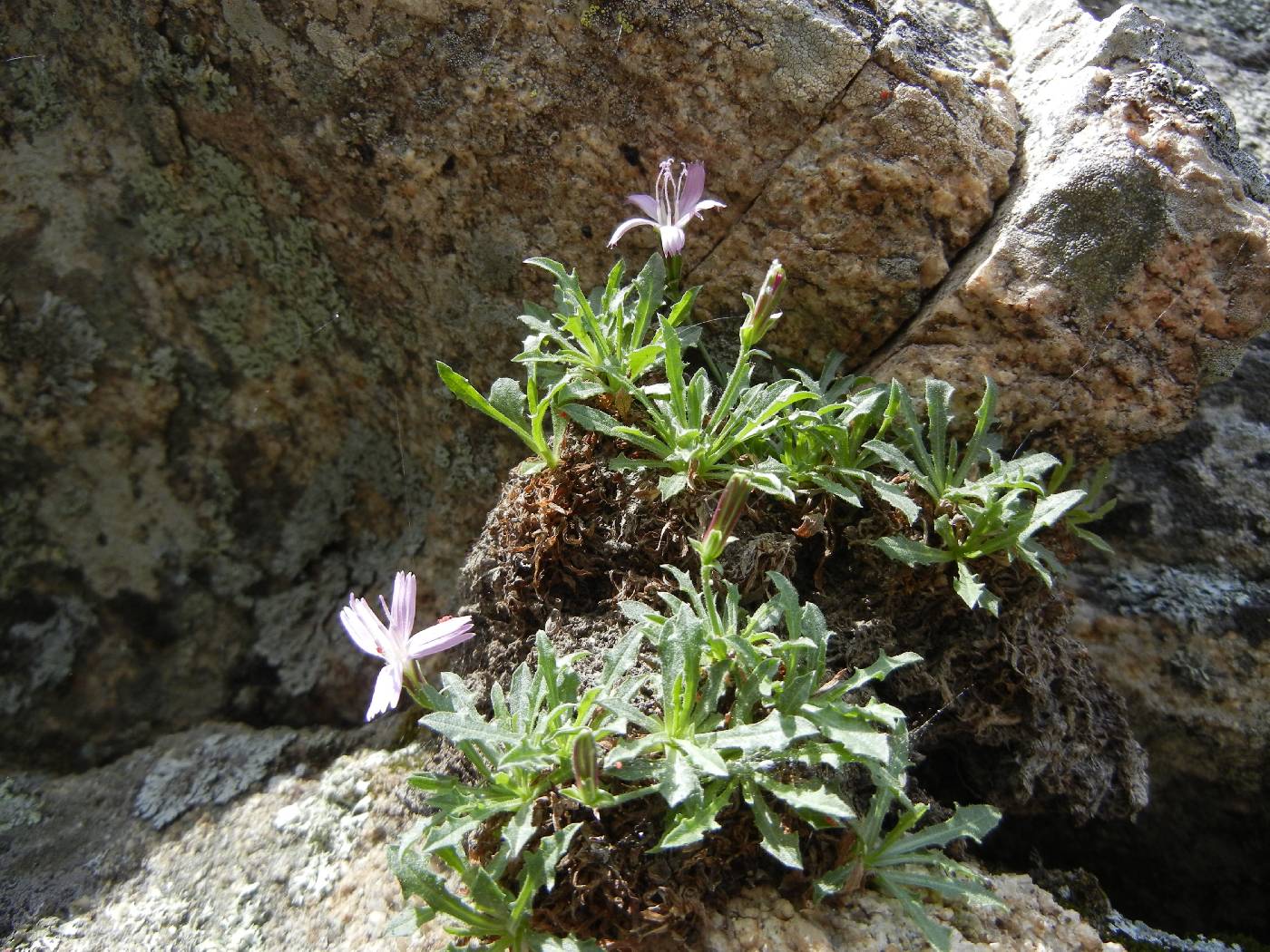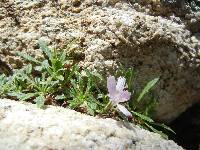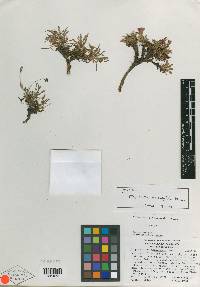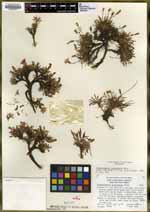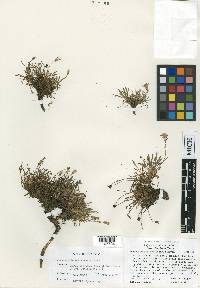
|
|
|
|
Family: Asteraceae
|
Plant cespitose, forming dense cushions to 3 dm wide and 1 dm high, the interstices packed solid with soil. Stems 2-5 mm thick, each branch with a rosette of ca. 5- 15 leaves and covered below with persistent dead leaves. Leaves oblanceolate to linear-oblanceolate or occasionally spatulate, mostly acute, entire or commonly 1-3-dentate on each margin above, 0.5-3.5 cm long, 1 -5 mm wide above, 0.5-1.5 mm wide above the broadened base, subglabrous or (in the same plant) commonly glandular-puberulent with pluricellular trichome ca. 0.1 mm long, the teeth spreading or lightly reflexed, triangular, the upper mostly longer, to 1 mm long, the midrib prominent, the lateral veins obscure. Peduncle terminal 0.5-5 (-8) cm tall, slender, striate or angled, glandular-puberulent, often with 1 or 2 small lanceolate bracts above. Heads solitary, 10- 12 mm high, 14-21 mm wide, with 5-8 but commonly 6 florets, flowering May to July. Involucre cylindric, 7-9 mm long, 2-3 mm wide, of 5-9 but mostly 6 equal bracts and 3-5 graduated shorter ones, the bracts lanceolate, acute to narrowly rounded , 1-2 mm wide, green or purplish wi th scarious margin , minutely granular-glandu lar and often also sparingly glandular puberulent, the longer ones sparsely villous at apex. Receptacle shallowly pitted, glabrous. Corolla 7-13 mm long, the tube whitish, 2.5 -4 mm long, with a few scattered trichomes ventrally above, the ligule light to deep pink or rarely white, elliptic oblong, truncate and 5-lobed, 4.5 -9 mm long, 2 .5 -4.5 mm wide, the lobes 1-1.5 mm long and a third as wide, triangular-ovate, obtusish. Anthers 3.5-5 mm long, sagittate at base; pollen white. Style 7- 12 mm long, lavender above, ascending puberulent, the style branches ca. 1 mm long. Achenes light tan, pentagono-prismatic, only slightly na rrowed towards base and apex, 2.5 -3 mm long, 0.8-1.0 mm thick , the sides slightly channeled or nearly flat except for a straight shallow longitudinal groove ca. 0.1 mm wide, the angles sparsely and minutely ascending scaberulous Pappus persistent. white, 4-6 mm long, double, the inner bristles ca. 20, stiff, slightly widened and connate at base. plumose nearly to base with pinnae 0.3-0.5 mm long, the outer bristles inconpicous, alternating, very slender, smooth or scaberulous, mostly less than 1 mm long.
Distribution. - Known only from the type locality. Other collections: 15064, 15332,
Stephanomeria monocephala differs from others of the genus in its polster habit and
|

